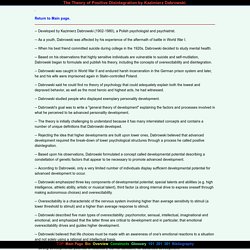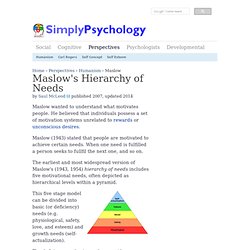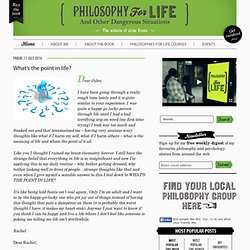

WCME 006: A conversation with Julie, a 9 (Peace-Seeker) – Pace Smith. Narcissism: a genetic trait. Signs You’re A Narcissist. The views expressed are those of the author and are not necessarily those of Scientific American.

If I see one more listicle about introversion, I’m going to cry. It started out with the fairly reasonable “31 Unmistakable Signs That You’re An Introvert.” Sure, many of the items on the list offered an exaggerated version of introversion, but there were some real gems that had a large grain of truth. Like this one: But then this happened: 22 Signs Your Dog’s An Introvert "He often wears headphones with no music playing, in the hopes no one will try and talk to him.
" You’d think that’d be enough for a lifetime of listicles. Another common misconception perpetuated by these listicles is that introversion and sensory processing sensitivity are the same thing. “While extroverts tend to get bored easily when they don’t have enough to do, introverts have the opposite problem — they get easily distracted and overwhelmed in environments with an excess of stimulation.”
Really? So here’s the test. Done? The Unaddressed Business of Filling Our Souls: Mood Science and the Evolutionary Origins of Depression. By Maria Popova What language and symbolism have to do with mood and how light exposure and sleep shape our mental health.

“Depression is a disorder of the ‘I,’ failing in your own eyes relative to your goals,” legendary psychologist Martin Seligman observed in his essential treatise on learned optimism. But such a definition of depression, while true, appears somehow insufficient, overlooking the multitude of excruciating physical and psychological realities of the disease beyond the sense of personal failure. Personality Types. Members Login Log in to your account below: Enter your e-mail address to receive a reset link.

Forgot password? The Sixteen Personality Types - High-Level. ISTJ - The Duty Fulfiller Serious and quiet, interested in security and peaceful living.

Extremely thorough, responsible, and dependable. The key points of the theory of positive disintegration. Return to Main page. -- Developed by Kazimierz Dabrowski (1902-1980), a Polish psychologist and psychiatrist. -- As a youth, Dabrowski was affected by his experience of the aftermath of battle in World War I. -- When his best friend committed suicide during college in the 1920s, Dabrowski decided to study mental health. -- Based on his observations that highly sensitive individuals are vulnerable to suicide and self-mutilation, Dabrowski began to formulate and publish his theory, including the concepts of overexcitability and disintegration. -- Dabrowski was caught in World War II and endured harsh incarceration in the German prison system and later, he and his wife were imprisoned again in Stalin-controlled Poland. -- Dabrowski said he could find no theory of psychology that could adequately explain both the lowest and depraved behavior, as well as the most heroic and highest acts, he had witnessed. -- Dabrowski studied people who displayed exemplary personality development.

Existential Depression in Gifted Individuals « SENG. Existential Depression in Gifted Individuals by James T.

Maslow's Hierarchy of Needs. Maslow wanted to understand what motivates people.

He believed that individuals possess a set of motivation systems unrelated to rewards or unconscious desires. Maslow (1943) stated that people are motivated to achieve certain needs. When one need is fulfilled a person seeks to fullfil the next one, and so on. The earliest and most widespread version of Maslow's (1943, 1954) hierarchy of needs includes five motivational needs, often depicted as hierarchical levels within a pyramid. This five stage model can be divided into basic (or deficiency) needs (e.g. physiological, safety, love, and esteem) and growth needs (self-actualization). The deficiency, or basic needs are said to motivate people when they are unmet. One must satisfy lower level basic needs before progressing on to meet higher level growth needs.
Every person is capable and has the desire to move up the hierarchy toward a level of self-actualization. The original hierarchy of needs five-stage model includes: 1. 1. 1. 2. 3. 4. What's the point in life? Dear Jules, I have been going through a really rough time lately and it is quite similar to your experience.

I was quite a happy go lucky person through life until I had a bad terrifying trip on weed (my first time trying) I took way too much and freaked out and that traumatised me – having very anxious scary thoughts like what if I harm my self, what if I harm others – what is the meaning of life and whats the point of it all.
Like you I thought I ruined my brain chemistry forever. I still have the strange belief that everything in life is so insignificant and now I’m applying this to my daily routine – why bother getting dressed, why bother looking well in-front of people…strange thoughts like that and even when I give myself a sensible answer to this I boil down to WHAT’S THE POINT IN LIFE? It’s like being told Santa isn’t real again.. Rachel Dear Rachel,